Meanwhile, US national debt reaches an all-time high. Each week, our team takes you through the last seven days in seven charts.
1. Nasdaq Market Cap Is Higher Than US GDP
For the first time on record, the market cap relative to US has reached 105%. This ratio has nearly doubled since the 2022 bear market low and now stands approximately 40 percentage points above the peak seen during the 2000 Dot-Com Bubble. It is also at an all-time high relative to global GDP.
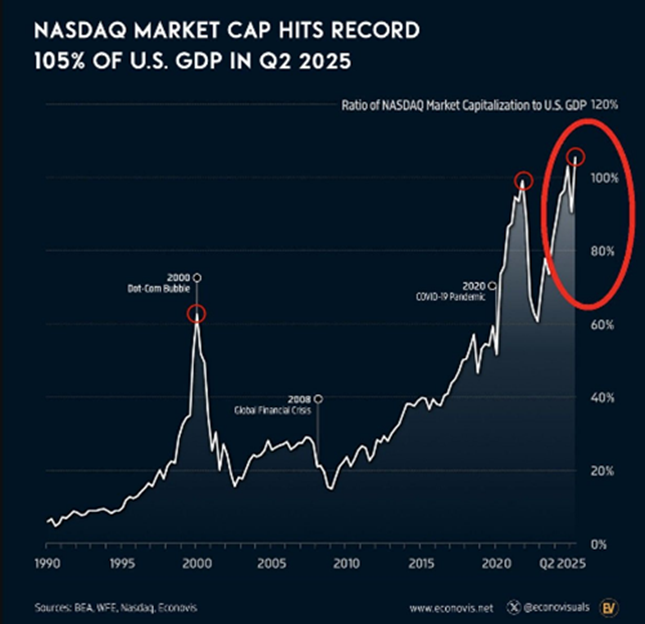
Source: Global Markets Investor, econovisuals
2. The US National Debt Surpasses $37 Trillion for the First Time
The US national debt is up +$780 billion since President Trump’s ‘One Big Beautiful Bill Act’.
That’s +$22 billion added every single day. The total debt now stands at over $37.2 trillion, pushing the federal debt-to-GDP ratio to 123.29%, the highest on record and more than double the level seen in 2000.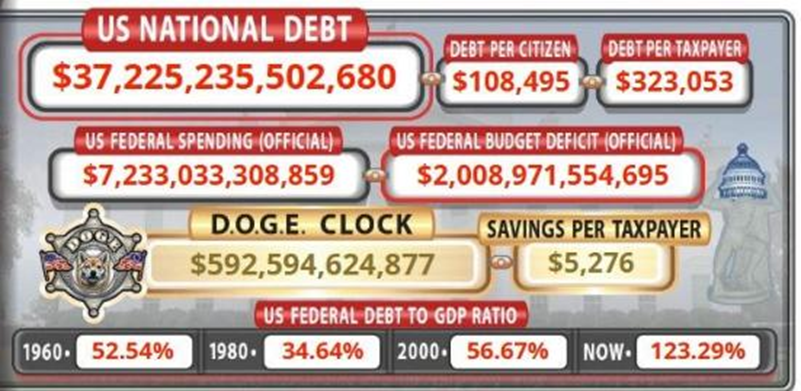
Source: US Debt Clock.org
3. Elon Musk Is the Richest Person in the World According to Forbes
Here’s the list of Forbes “world’s richest” by year since 1987. In 2025, Elon Musk tops the list with a net worth of $342 billion.
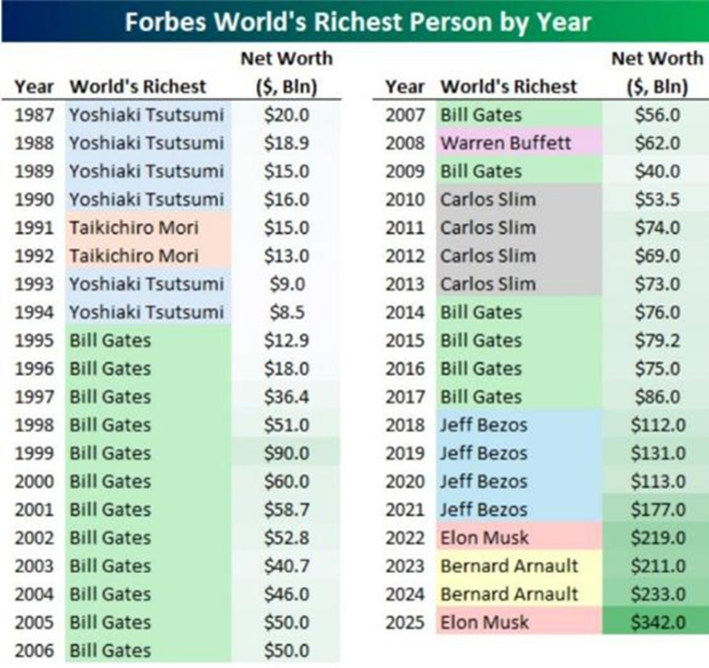
Source: Bespoke
4. The Cost of Nutella in Germany Is Rising Faster Than Overall Inflation
The price of a 750g jar has gone up by nearly 40% since 2019, far exceeding Germany’s overall inflation rate of 21.8% over the same period.
This trend reflects a broader pattern: Eurostat’s Food CPI shows that food prices in Germany have risen by 38.4% since the end of 2019. Substantially higher than in Italy (+29.5%) or France (+25.9%), illustrating how sharply grocery bills have risen in Germany.
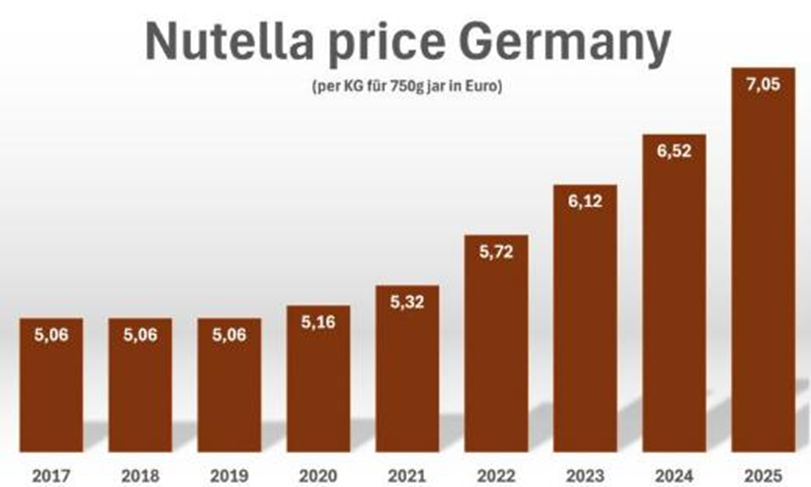
Source: HolgerZ
5. France’s Long-Term Borrowing Costs Are Converging With Italy’s for the First Time Since the Global Financial Crisis
Over the past year, yields on government bonds have climbed above 3 per cent, reflecting the impact of months of political instability and growing concerns about public finances. This has left France’s benchmark borrowing costs to just 0.14 percentage points below those of Italy, whose bond yields have fallen as Giorgia Meloni’s administration has won over investors with a display of fiscal prudence.
This convergence challenges long-standing perception of France’s position as one of the euro area’s safest borrowers and Italy among its riskiest, burdened with public debt equal to roughly 140% of GDP. During the Eurozone debt crisis of the 2010s, the yield spread between the two countries ballooned to more than 4 percentage points.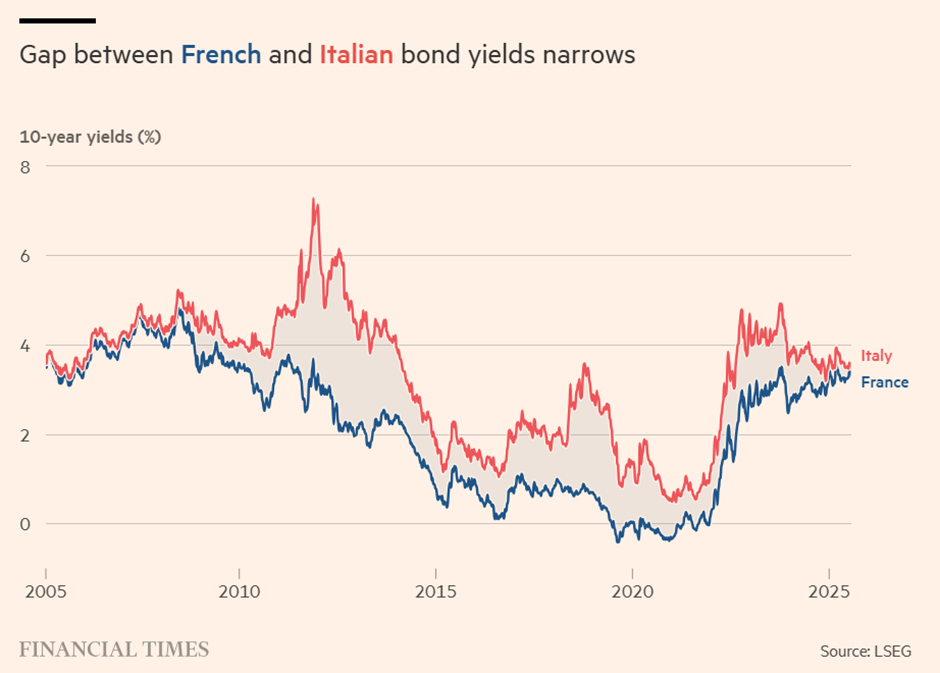
Source: FT
6. Stablecoins Have Started to Surpass Visa Payments in Transaction Volume
Stablecoins have emerged among the most impactful applications in the cryptocurrency space, serving as digital representations of the that operate on blockchains like . Unlike traditional bank wires, which can require up to 24 hours, stablecoins transfers settle in seconds, the same time it takes to send a text.
Stablecoins only started getting off the ground in 2019. They have since seen extraordinary growth with more than $6 trillion worth of transactions last quarter alone. Congress recently passed a historic stablecoins bill designed to strengthen their security and public confidence in their use.
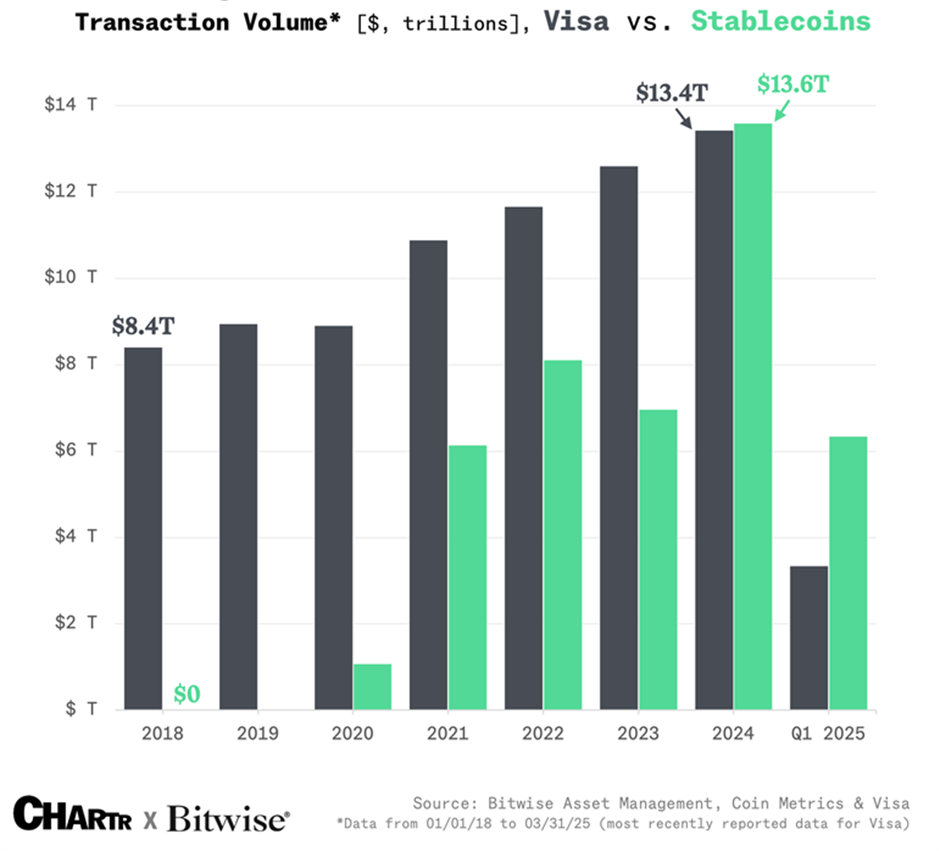
Source: Chartr, Bitwise
7. On AG Is Outpacing Shoe Rival Hoka
Hoka and On Holding (NYSE:) share strikingly similar origins: Hoka was founded in 2009 in the French Alps by two athletes, while On Holding was launched a year later in Zurich, Switzerland by three founders. Their earlier growth paths remained closely aligned as Hoka was acquired in 2012 by American footwear giant Deckers (NYSE:) for a reported $1.1 million, while On signed Swiss tennis legend Roger Federer as a brand representative in 2019, giving him a 3% stake in the company, before going public in 2021.
For much of the past six years, the two Europe-born brands reported comparable sales. In recent year, however, On has pulled ahead, reporting approximately $2.6 billion in sales last year and delivering another impressive quarter yesterday, in which sales jumped 38% on a currency-adjusted basis.
Hoka remains a strong performer, generating $2.2 billion in revenue in the last fiscal year, but investors’ expectations may have been overly optimistic. The brand posted approximately 20% sales growth in the latest quarter, but a slowdown in the all-important US market has heavily impacted parent company Deckers, whose stock has dropped nearly 50% this year.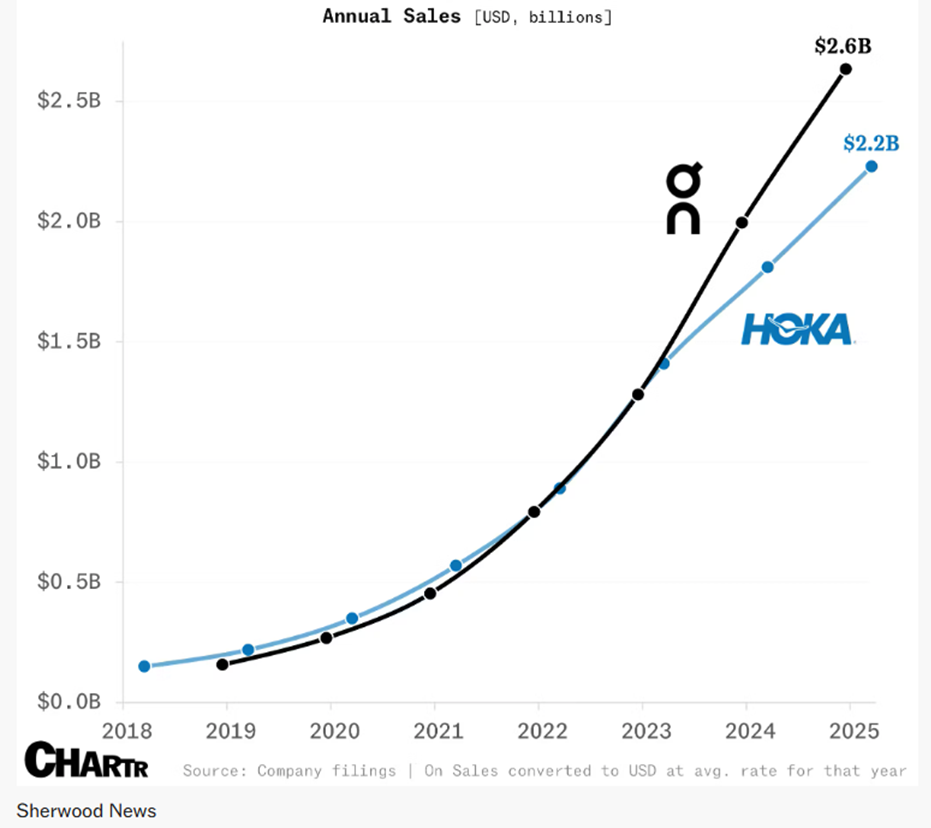
Source: Chartr

